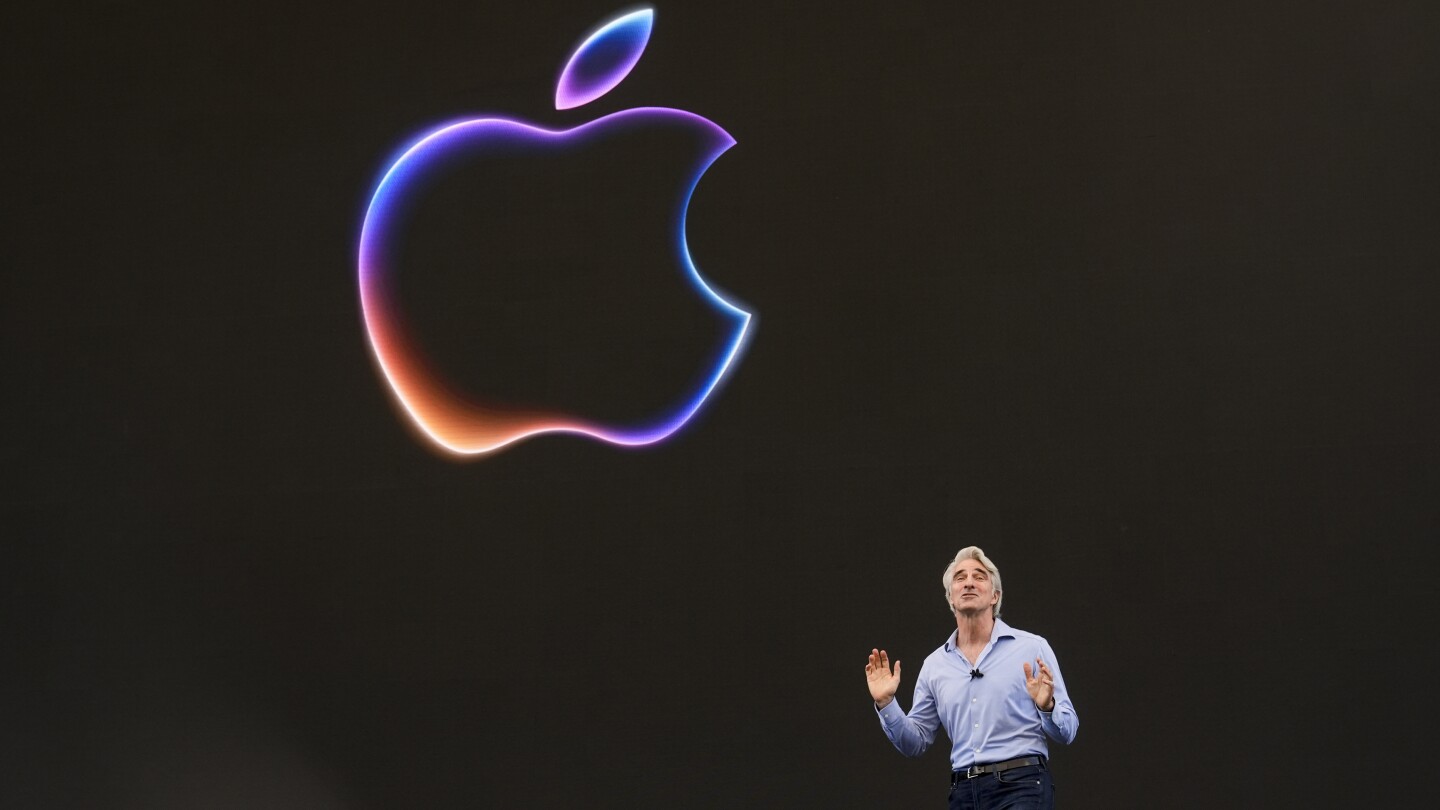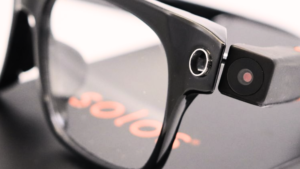CUPERTINO, Calif. (AP) — Apple jumped into the race to bring generative artificial intelligence to the masses, highlighting a set of features Monday designed to complement iPhones, iPads and Macs.
And in a move befitting a company known for its marketing prowess, the AI technology coming as part of free software updates later this year is being billed as “Apple Intelligence.”
Even as it tries to put its own stamp on tech’s hottest field, Apple tacitly acknowledged at its Worldwide Developers Conference that it needs help catching up to companies like Microsoft and Google, which have emerged as early leaders in AI. Apple is relying on ChatGPT, made by San Francisco startup OpenAI, to make its often clumsy virtual assistant Siri smarter and more useful.
“All of this goes beyond artificial intelligence, it’s personal intelligence, and it’s the next big step for Apple,” said CEO Tim Cook.
The additional Siri gateway to ChatGPT will be free for all iPhone users and will be available for other Apple products once the option is included in the next generation of Apple operating systems. ChatGPT subscribers are supposed to be able to easily sync their existing accounts when using an iPhone, and should get more advanced features than free users.
To announce the alliance with Apple, OpenAI CEO Sam Altman sat in the front row of the packed conference, attended by developers from more than 60 countries.
“Together with Apple, we’re making it easier for people to take advantage of what AI has to offer,” Altman said in a statement.
In addition to letting Siri tap into ChatGPT’s storehouse of knowledge, Apple is giving its 13-year-old virtual assistant a major makeover designed to make it more personable and flexible, even though it currently fields about 1.5 billion requests a day .
When Apple releases free updates to the software powering the iPhone and its other products this fall, Siri will signal her presence with flashing lights around the edges of the display screen. It will be able to handle hundreds more tasks — including duties that may require touching third-party devices — than it does now, based on Monday’s presentations.
The full range of upcoming Apple features will only work on newer iPhone, iPad and Mac models, as the devices require advanced processors. For example, users will need last year’s iPhone 15 Pro or buy the next model coming out later this year to take full advantage of Apple’s AI suite, although all the tools will work on Macs from 2020. after the next operating system is installed on this computer.
Artificial intelligence updates coming to the next versions of Apple’s software aim to enable the billions of people who use the company’s devices to do more in less time, while giving them access to creative tools that would could liven things up. For example, Apple will implement AI to let people create emojis called “Genmojis” on the fly to match the vibe they’re trying to convey.
Apple’s goal with AI “is not to replace users, but to empower them,” Craig Federighi, Apple’s senior vice president of software engineering, told reporters. Users will also have the option to go into device settings to turn off any AI tools they don’t want.
Monday’s showcase appeared to be aimed at allaying concerns that Apple could lose its edge with the advent of AI, a technology expected to be as revolutionary as the introduction of the Phone in 2007. Both Google and Samsung have already released smartphone models touting AI features as the main attraction, while Apple stayed in an unusually prolonged decline in sales.
The AI craze is the main reason why Nvidia, the dominant maker of the chips underlying the technology, has seen its market value jump to around $300 billion at the end of 2022. about $3 trillion. The meteoric rise has allowed Nvidia to surpass Apple as the second most valuable company in the US. Microsoft also eclipsed the iPhone maker earlier this year on the strength of its previously successful push into AI.
Investors didn’t seem as impressed by Apple’s AI presentation as the crowd that came to the company’s headquarters in Cupertino, California, to see it. Apple’s stock price fell nearly 2% on Monday.
Despite this backlash, Wedbush Securities analyst Dan Ives argued in a research note that Apple is “on the right track.” He hailed the presentation as a “historic” day for a company that has already changed the technology industry and society.
In addition to pulling AI tricks out of its bag, Apple also used the conference to confirm that it will be rolling out a technology called Rich Communications Service, or RCS, to its iMessage app. The technology should improve the quality and security of text messages between the iPhone and devices running Android software, such as the Samsung Galaxy and Google Pixel.
The change, due to come with the next version of the iPhone’s operating software, will not eliminate the blue bubbles denoting texts originating from the iPhone and the green bubbles denoting text sent from Android devices — a distinction that has become a source of social stigma.
In another upcoming twist to the iPhone’s messaging app, users will be able to write a text (or have an AI tool compose it) in advance and schedule a specific time for it to be sent automatically.
Monday’s presentation marked the second year in a row that Apple has stirred excitement at its developer conference by using it to introduce a modern form of technology that other companies have already used.
Last year, Apple provided an early look at its mixed reality headsetVision Pro, which wasn’t released until early 2024. However, Apple’s foray into mixed reality — with a twist billed as “spatial computing” — has raised hopes that there will be more consumer interest in this niche technology.
Part of this optimism stems from The Apple story of releasing the technology later than others, then using sleek design and slick marketing campaigns to overcome its late start.
Bringing more artificial intelligence to the iPhone is likely to raise privacy concerns, a topic that Apple has gone to great lengths to reassure its loyal customers that they can be trusted not to pry too deeply into their private lives. Apple did speak widely on Monday about its efforts to build strong privacy protections and controls around its AI technology.
One of the ways Apple tries to convince users that the iPhone won’t be used to spy on them is by using its chip technology so that most of its AI-powered features are managed on the device itself. instead of in remote data centers, often referred to as “the cloud.” Going this route would also help protect Apple’s profit margins, since AI processing through the cloud is much more expensive than running on a device alone.
When Apple users require AI to require computing power beyond what’s available on the device, the tasks will be handled by what the company calls a “private cloud,” which is supposed to protect their personal data.
Apple’s AI “will be aware of your personal data without collecting your personal data,” Federighi said.



